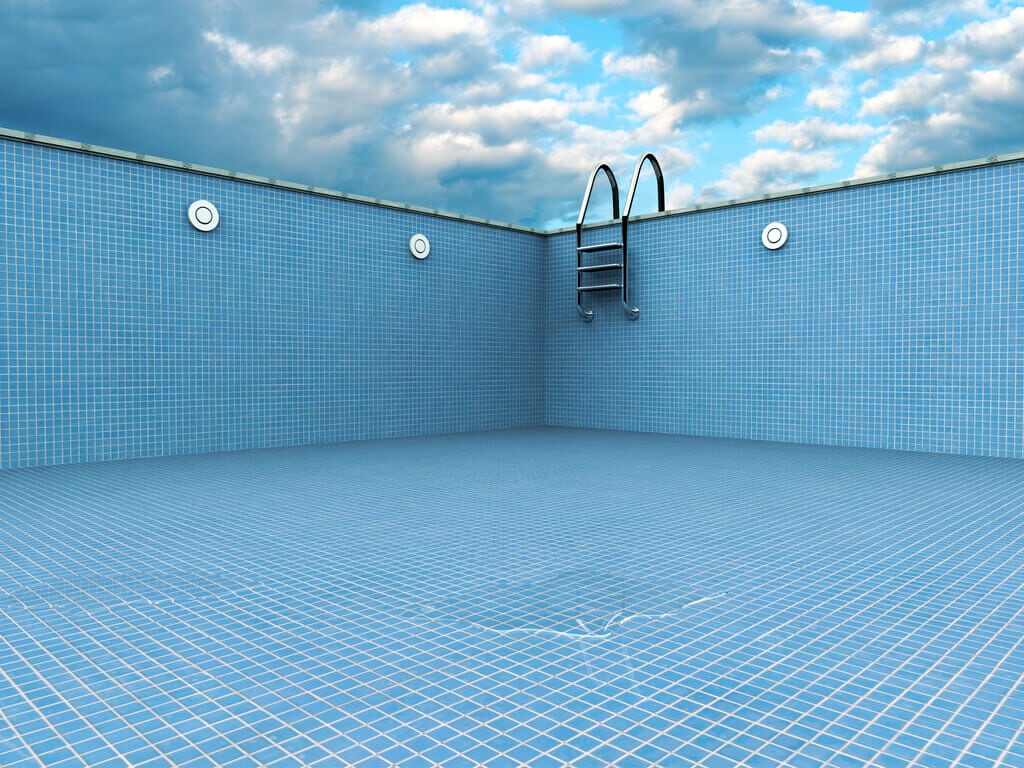What’s the Best Material for Lining Your Pool?

This is a popular question, but first, you need to understand exactly what a swimming pool liner is. We’re talking about the material placed over the swimming pool’s structure. Pool liners go completely over the walls and the floor of pools, working hard to retain water and maintain a clean appearance. This is why you need to replace swimming pool liners a few times throughout the pool’s lifetime.
To help you out, we have tips to keep in mind for when you do. However, in this blog post, we’re diving deep into the different types of pool liners and how you can choose the best pool liner for your needs.
When Is It Time to Reline Your Pool?
To keep your pool in good shape, you have to occasionally reline it. If you just let it go, eventually you’ll start to see cracks and rips in the pool wall. That’s the most obvious sign that it may be time to consider not only new but different pool liners.
Even if some cracks and rips in the lining are too small to see, you’ll notice as you start to lose the water in your pool. Sometimes, it’s slow, making it nearly impossible to notice.
With different pool liners, you will start to see visible degradation from UV and chemical damage. Most pool liners today, either above-ground pool liners or in-ground, will resist fading from UV for a certain amount of time, but even the best pool liner isn’t completely immune to it.
Over time, you’ll see the color begin to fade and feel your new liner become brittle. If it’s gotten to this point, you need to reline it. This also means that your chemicals are unbalanced, which means they aren’t properly cleaning the pool, and it’s become unsafe to swim in more ways than one.
What’s the best material to reline your pool with?
You always could just reline your pool with the same type of lining you used the first time, but now is the perfect time to improve the pool liner and make sure it lasts even longer than the first one.
There are several different types of pool liners but only one can be the best. Between fiberglass, vinyl, and concrete pools, why not look at your options?
1. Fiberglass Pool
Fiberglass is generally considered to be the best pool liner for in-ground pools, largely because it is low maintenance with its gelcoat surface.
This makes sure the pool shell inhibits algae growth and the number of chemicals you need to maintain the pool. Better yet, unlike different types of pool liners, fiberglass is made to last. It needs no upkeep, as there’s no vinyl lining that needs repair or cracking from ice pressure. There’s the one installation fee and that’s it, making it cheaper on multiple fronts.
Not only are they cheaper than different types of pool liners in the long run, but they’re also easier to deal with. Outside of needing fewer chemicals to clean it, its installation moves more rapidly. Because the shells are built off-site, the installation is 3-6 weeks on average and comes with built-in seats and steps in comparison with different pool liners.
2. Vinyl-lined Pool
Vinyl liners are exactly what they sound like: vinyl. Vinyl liners don’t last forever, with several factors that make the material go up in price in comparison with other above-ground pool liners.
Vinyl pool liners have always been the most common material used for pool lining because of its price and availability. However, that’s not necessarily true anymore.
Vinyl liners appear affordable upfront, but over time, cost more and more money as you need to repair the pool. A 12’ round vinyl pool liner may only be $100, but replacing it repeatedly in the average-sized pool, and you’ll see the cost rise again and again.
Beaded pool liner can be an excellent expansion on vinyl liners and can add that little extra something without an extensive installation process. It’s much easier to replace and less expensive than fiberglass.
3. Concrete Pool
The most common type of concrete liner is gunite; it’s sprayed into the hole in the ground to make a pool shell. In Pennsylvania, it usually runs more expensive than vinyl because of our low temperatures during the fall, winter, and spring.
When it gets cold outside, this will lead to ice pressure where the pool cracks. You’d need to repair the liner constantly, or put money into steel, concrete, and expertise to keep it from cracking under ice pressure.
Basically, since it’s not easier to upkeep and it’s not cheaper, the only real bonus is its infinite customization. Since there is no set size or finish, you can pick whatever you want. It can be sprayed into any stable hole in the ground, allowing you to have any shape you want.
At the same time, this is potentially another thing you’d have to upkeep and fix on a regular basis. It’s the perfect example of one going for style over substance.
Contact Aqua Leisure Pools and Spas For More Information About Our Pool Liners
Relining or investing in a pool is a big step, and not a small decision, no matter which one you pick. We have vinyl and fiberglass pools to meet your needs, which you can see at any of our locations.
If you’re looking for a new pool, we offer various shapes and sizes for you to choose from.
If you still need help seeing the pros and cons of each lining type and which one is best for you, contact us today for quotes on our different pool liners!
We have three locations across Pennsylvania in Tannersville, Dickson City, and Wilkes-Barre. Dive into your dream pool and make memories in your backyard for years to come!
Posted by Aqua Leisure Pools & Spas in Pools

